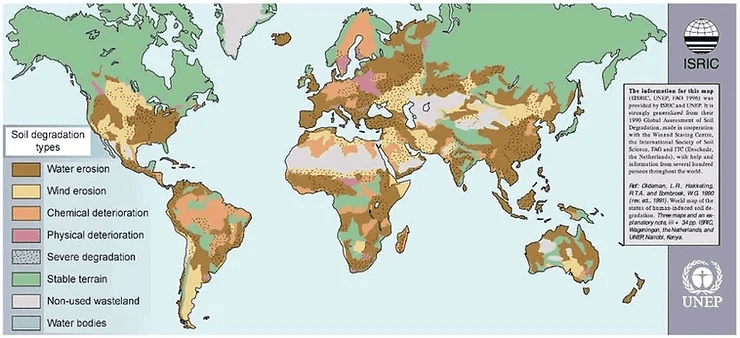


The degradation of soil quality on a global scale represents a serious threat to our food production system. According to the FAO, no less than 30% of the world’s soil is moderately to highly degraded. Rethinking our farming practices has become a top priority, but the alternatives to conventional agriculture remain rare and little-known. This article presents a promising solution for a more sustainable future: regenerative agriculture.
Regenerative agriculture is a way of farming that aims at revitalizing the soil and the environment to ensure the sustainability of our food production system. It encompasses a set of practices that:
Regenerative farming includes practices such as no-till or minimum tillage (see our article Tillage: farming practices in Thailand and environmental consequences). It also involves well-managed grazing, cover cropping, and composting. These practices contribute to soil fertility and build biological ecosystems. Examples include polyculture and agroforestry.
The shift from conventional to sustainable agriculture is seen as a move from intensive practices to a less harmful system. This transition reduces greenhouse gas emissions. The key benefit of regenerative agriculture is that it not only reduces emissions but also draws excess carbon from the atmosphere.
For millions of years, greenhouse gases like CO2, CH4, and N2O have followed a natural cycle. The gases are stored in soil and water, then released into the atmosphere through processes like respiration and swamps. Plants reverse this by putting carbon back into the soil through photosynthesis. However, human activities have disrupted this cycle. The world’s cultivated soils have lost between 50 and 70 percent of their original carbon stock, according to the Carbon Management and Sequestration Center.
How can we sequester the excess carbon, and what mechanisms are involved? Two key players are vegetation and soil microorganisms. Plants can draw CO2 from the air, form carbon compounds, and exude the remaining carbon into the soil through their roots. Soil microorganisms, such as bacteria, fungi, algae, protozoa, and nematodes, use and store the carbon. In a teaspoon of healthy soil, there are more microbes than people on earth.
Carbon is essential for these organisms, providing the main component of organic matter. It gives the soil its fertility and structure. By nurturing this living soil, creating favorable conditions for agroecosystem development and global photosynthesis, regenerative agriculture fosters carbon sequestration and helps reverse climate change.
For decades, industrial agriculture promoted chemical solutions including insecticides, herbicides, fungicides, nematicides and artificial fertilizers. Hence, shifting from conventional to regenerative agriculture means to completely reset a farm’s model. Let’s learn entirely new practices and develop a new business model with several cultures instead of monocropping. For a farmer, such transition requires a lot of psychological, financial and technical effort. Fortunately, a growing number of successful initiatives pave the way for the global development of regenerative agriculture. Major agrifood players, international institutions, and investors are showing an increasing interest in regeneratively produced crops, and will hopefully support a transition at farm level.
Last year, the documentary Kiss the Ground was released on Netflix. It introduced regenerative agriculture to the public and showcased farmers who shifted their practices. The conclusions were consistent: regenerative agriculture not only brings biodiversity back to farms but also increases crop productivity and farmers’ revenues. Scientific literature supports these findings. A notable case is Leontino Balbo Jr, a sugarcane farmer who implemented regenerative practices. By collaborating with nature, he increased productivity by 20% and became Brazil’s largest organic sugar grower.
However, large farms don’t hold the monopoly on regenerative farming innovations. Smallholder farmers are crucial for scaling regenerative agriculture. Dr. Roland Bunch, a respected leader in regenerative land management, spent years studying creative farming practices worldwide. His remarkable compilation of case studies on regenerative agriculture reveals astonishing results and leaves us with one question: What are we waiting for? Contact FairAgora today!





At FairAgora Asia, we drive sustainability through innovative agricultural practices, social impact training, and environmental risk assessments. Partnering with global organizations, we empower stakeholders to embrace sustainability for a greener future.
(+66) 02 252 6980
(+66) 080 770 5964
10 Soi Sukhumvit 13, Khlong Toei Nuea, Watthana, Bangkok 10110, Thailand.
© 2024 by Fairagora Asia